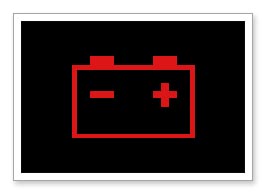Auto Electrical Repair San Diego
Do you live in San Diego and have a vehicle needed electrical repairs? Rest easy, Pacific Automotive has been helping San Diego drivers with their vehicle electrical repairs for 20 years.
Did you know that almost every working part of your car or truck is likely connected to the electrical system? So it is important to get your car electrical problem professionally diagnosed quickly, to avoid causing many more electrical problems. Whether your car’s built-in electrical system warning light is on, or you have you noticed problems for yourself – such as if you have started smelling smoke, or any of your vehicle’s lights stopped working – we can help. We can diagnose what the problem is, and offer electrical repair solutions.

Charging System Warning Light
The battery, or charging system, warning light, is one of the most critical warning lights on any vehicle. It is most likely configured in one of three ways:
- The light is red and reads “BATT” when the engine is off but the key is on, for example when you are playing the radio
- The light is amber or red and displays “CHG” or “ALT”
- There is a red or amber icon that looks like a simple car battery.
When your charging system warning light comes on, it means that your vehicle is running on battery power only and will only be able to drive a short way before it runs out of electrical power and dies.
In new vehicles, the powertrain computer controls the charging systems, unlike in older vehicles which are controlled by the alternator. When the powertrain computer picks up an unexplained difference between the desired and actual system voltage, it will illuminate the warning light.
There are two important indicators of a problem with your car’s electrical system.
When you start your car, the warning light should stay on for 1 to 2 seconds and then turn off and stay off for the entire time the engine is running. If this light never comes on during the self test procedure (when you start the car), there is either a problem with the charging system or the warning light. It could mean the warning light bulb needs to be replaced, or that you need a professional to diagnose your electrical system. The safest choice here is to have the car towed to a qualified electrical repair shop for a complete charging system inspection and diagnosis.
If the charging system warning light does not go off after the self-test, comes on while the car is running, or intermittently goes on and off while the engine is running, there is a problem with the operation of the charging system.
What should I do if my charging system warning light comes on while I am driving?
If the warning light comes on while you are driving at night while you are using your headlights, you most likely have only a very short time left before the engine will die. Turn off your radio and your heater or air conditioning, and find a safe place to stop in a convenient area from which your car can be towed to an experienced electrical repair shop. At Pacific Automotive, we are centrally located for all San Diego, La Jolla
If the warning light comes on during the day, you have a little more time without the drain on the electrical system from the use of the headlights. Again, turn off the radio and any unnecessary electrical devices like the heater or air conditioning, and go to a qualified electrical repair shop like Pacific Automotive or a safe place to park the car and have it towed.
If during the
